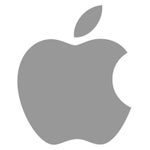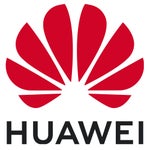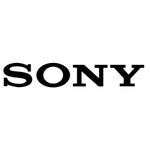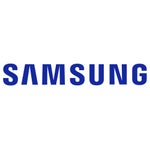News
iPhone Flip Phone: Rumors, Specs, Price & Release Guide (2025-2026)
iPhone Flip Phone: Rumors, Specs, Price & Release Guide (2025-2026)
Apple's highly anticipated entry into the foldable smartphone arena draws near, with the iPhone Flip phone emerging as one of 2026's most exciting tech launches. After years of speculation, insider reports now confirm Apple is developing a premium foldable device featuring breakthrough crease-free display technology, an ultra-thin design profile, and cutting-edge engineering innovations. While competitors like Samsung and Google have dominated the foldable market since 2019, Apple's characteristically patient approach promises to deliver a polished, feature-rich device that could redefine smartphone versatility. The iPhone Flip represents more than just another product launch—it signals Apple's commitment to reinventing mobile experiences through revolutionary form factors and premium craftsmanship.
iPhone Flip: Essential Details & Overview
Apple's foldable iPhone project, internally codenamed "V68," represents a significant departure from traditional iPhone design philosophy. Current intelligence suggests a book-style foldable configuration similar to Samsung's Galaxy Z Fold series, rather than a clamshell flip phone design. The device promises to combine iPhone portability with iPad-like productivity capabilities.
Core Specifications (Rumored):
-
Main Display: 7.8-inch crease-free OLED panel with 4:3 aspect ratio
-
Cover Display: 5.5-inch external screen for notifications and quick tasks
-
Thickness: Ultra-slim 4.5-4.8mm when unfolded, 9-9.5mm when closed
-
Battery Capacity: 5,000-5,500mAh (largest ever in an iPhone)
-
Construction: Premium materials including titanium alloy frame and liquid metal hinge
Launch Timeline & Production Strategy
Manufacturing momentum for the iPhone Flip has accelerated significantly throughout 2025. Samsung Display began dedicated production line setup at their A3 factory in Asan, South Korea, with capacity to produce 15 million foldable displays annually. This exclusive partnership underscores the technical complexity and Apple's confidence in Samsung's foldable expertise.
Production Milestones:
-
Q3 2025: Display production commenced at Samsung facilities
-
Q4 2025: Final component specifications finalization
-
H1 2026: Mass production ramp-up begins
-
Fall 2026: Expected retail launch alongside iPhone 18 series
Industry analyst Ming-Chi Kuo projects initial shipments of 15-20 million units spread across 2026-2028, reflecting both manufacturing constraints and premium pricing positioning. This conservative approach mirrors Apple's traditional strategy of perfecting technology before mass market deployment.
Pricing Analysis: Premium Positioning Explained
The iPhone Flip will command premium pricing reflective of its innovative engineering and advanced materials. Multiple analyst reports converge on a $2,000-$2,500 price range, positioning it among the most expensive smartphones ever produced.
Comparative Pricing Landscape (2026 Projected)
| Device | Brand | Price Range | Display Size | Key Features |
| iPhone Flip | Apple | $2,000-$2,500 | 7.8" / 5.5" | Crease-free, titanium build |
| Galaxy Z Fold 7 | Samsung | $1,999 | 7.6" / 6.2" | Established ecosystem |
| Pixel 10 Pro Fold | $1,749 | 8.0" / 6.3" | AI integration, value positioning | |
| Razr 2025 Ultra | Motorola | $1,399 | 6.9" / 4.0" | Compact design, competitive price |
This premium positioning reflects several cost factors: revolutionary display technology development, complex manufacturing processes, low initial production volumes, and Apple's brand premium. The pricing strategy targets early adopters and professionals willing to pay for cutting-edge technology.
Revolutionary Design: Display Technology & Build Quality
Breakthrough Display Innovation
Apple’s partnership with Samsung Display has yielded unprecedented advances in foldable screen engineering. The iPhone Flip will feature Samsung’s most advanced crease-free display solution, incorporating in-cell touch technology that integrates sensors directly into the OLED panel rather than using separate layers. For an in-depth look at the underlying display innovations, see this comprehensive guide here.
Technical Advantages:
-
19% thickness reduction compared to traditional foldable displays
-
Enhanced touch responsiveness through direct sensor integration
-
Virtually invisible crease through advanced hinge engineering
-
Improved durability via stress distribution optimization
Premium Materials & Construction
The device construction emphasizes durability and premium aesthetics through carefully selected materials:
Frame: Titanium alloy construction providing strength while maintaining lightweight properties
Hinge: Liquid metal engineering with laser-drilled microstructures for optimal stress management
Display Protection: Advanced polymer layers designed for thousands of fold cycles without degradation
Ultra-Thin Profile Achievement
At 4.5-4.8mm thickness when unfolded, the iPhone Flip would become Apple's thinnest device ever produced. This engineering achievement surpasses even the rumored iPhone 17 Air (5.5mm) while incorporating complex folding mechanisms and dual displays.
Performance Specifications & Software Integration
Processing Power & Memory
While official specifications remain unconfirmed, the iPhone Flip will likely feature Apple's next-generation silicon designed for 2026 devices. Expected configurations include:
Processor: A19 or A20 series chip with enhanced efficiency for dual-display operation
Memory: 12GB RAM for seamless multitasking across multiple screen configurations
Storage: Starting at 256GB with options up to 1TB
Battery: 5,000-5,500mAh capacity optimized for extended usage
Camera System Innovation
Despite form factor constraints, Apple plans an advanced quadruple camera system:
Primary Cameras: Dual rear-facing setup with wide and ultra-wide lenses
Front Cameras: Traditional front-facing camera plus under-display camera for unfolded mode
Advanced Features: Computational photography optimization for both folded and unfolded orientations
iOS Evolution for Foldables
Apple's software strategy includes developing iOS enhancements specifically for foldable form factors. Expected features encompass adaptive user interfaces, enhanced multitasking capabilities, and seamless app continuity between screen configurations.
Market Competition: Apple vs. Established Players
Samsung's Market Leadership
Samsung currently dominates the foldable market with approximately 79% market share as of 2022. Their Galaxy Z Fold and Z Flip series have established consumer familiarity and ecosystem integration. However, Samsung's devices still exhibit visible creases and shorter battery life compared to Apple's projected specifications.
Google's Value Proposition
Google's Pixel Fold series emphasizes AI integration and competitive pricing, positioning around $1,749 for premium models. Their strength lies in software optimization and Google services integration, though hardware build quality remains behind Apple's projected standards.
Emerging Competition
Chinese manufacturers including Huawei, Oppo, and Xiaomi have introduced innovative foldable designs with competitive pricing. However, limited Western market availability and software ecosystem constraints limit their direct competition with Apple.
Apple's Differentiation Strategy
Apple's late entry allows them to address existing foldable pain points while leveraging their ecosystem advantages:
Technical Superiority: Crease-free displays and premium materials exceed current market standards
Ecosystem Integration: Seamless compatibility with Mac, iPad, and Apple Watch devices
Software Polish: iOS optimization specifically designed for foldable experiences
Brand Premium: Apple's reputation for quality and longevity justifies higher pricing
Consumer Implications & Market Impact
Target Demographics
The iPhone Flip targets several distinct consumer segments:
Business Professionals: Seeking device consolidation for productivity and portability
Creative Users: Requiring larger screens for content creation and editing
Tech Enthusiasts: Early adopters willing to pay premiums for cutting-edge technology
Apple Ecosystem Users: Customers deeply integrated into Apple's product family
Market Transformation Potential
Apple's foldable entry could catalyze broader market adoption. Historical precedents suggest Apple's participation often legitimizes emerging categories and accelerates mainstream acceptance. The iPhone's influence on touchscreen smartphones and AirPods' impact on wireless audio demonstrate this pattern.
Competitive Response Expectations
Samsung and Google will likely accelerate their own innovation timelines in response to Apple's entry. Expected developments include improved hinge mechanisms, enhanced software experiences, and more aggressive pricing strategies to maintain market positions.
Conclusion
The iPhone Flip represents Apple's most ambitious hardware project in years, combining revolutionary display technology with premium engineering. While the $2,000+ price point positions it as a luxury device, Apple's track record suggests significant market potential. The crease-free display technology, ultra-thin profile, and iOS integration could establish new industry standards for foldable devices.
Success will depend on delivering a polished experience that justifies premium pricing while addressing current foldable limitations. With retail launch targeted for fall 2026, the iPhone Flip could reshape the smartphone landscape, demonstrating Apple's continued innovation leadership in mobile technology.
Frequently Asked Questions
1. When will the iPhone Flip be released?
Current industry reports point to a fall 2026 launch, likely September, coinciding with the iPhone 18 series announcement.
2. How much will the iPhone Flip cost?
Analyst predictions range from $2,000-$2,500, making it Apple's most expensive iPhone ever due to advanced display technology and premium materials.
3. What makes the iPhone Flip different from Samsung's foldables?
Apple's device will feature crease-free display technology, ultra-thin 4.8mm profile when unfolded, and seamless iOS integration optimized for foldable experiences.
4. Will the iPhone Flip replace regular iPhones?
No, the iPhone Flip will be a premium addition to Apple's lineup, targeting users seeking device consolidation and enhanced productivity capabilities.
5. What display sizes will the iPhone Flip have?
Rumors indicate a 7.8-inch main foldable display with a 5.5-inch external screen for notifications and quick interactions.
6. Will Face ID work on the iPhone Flip?
Reports suggest Touch ID integration instead of Face ID due to form factor constraints and space limitations in the folded configuration.
Related Articles












